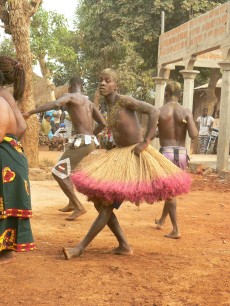Extracted from notes made during a cruise from Barbados to Cape Town. It seems important to mention that a flying one-day visit is no way to form an accurate impression of a society, but one day was all we had in each of the countries we visited down the west coast of Africa in early 2016. These notes, drawn from immediate experience, are nothing more than vignettes. And you know what they say about first impressions …
They called Lome, Togo, the pearl of Africa when the French were here, but what elegance there might have been has long since eroded. The haze over the city is dusty, spicy and sharp: a mix of traffic pollution, the sand dust that blows in from the Sahara and smoke from the smouldering garbage dumps at the edge of the city. Everything’s coated in fine sand; drifts of it collect in corners.
The people have an accusing look. No one smiles. They live in grit and filth. A woman with a bucket of orange packages on her head gives me the finger when I smile at her. We are clearly not welcome, and we should hardly expect to be, flaunting our cosseted little lives along the chaotic streets where people are eking out an existence hawking (often from the top of their heads) anything that might conceivably have a market: urns of tea by the cup, cosmetics, fruit, cigarettes, school supplies … A taxi driver wants $50 US to drive us a couple of miles to the fetish market (oh, curb your enthusiasm – this is where they sell monkey skulls and porcupine skins for the voodoo ceremonies).
Stencilled signs on walls and buildings everywhere declare that “it is forbidden to urinate here,” not that it matters – it seems half the male population is competing to pee for Togo. The US embassy, a great concrete and glass building in a fortified compound, looks as if it has been plunked down in this desolate urban landscape like something from another planet. This must be the foreign service’s very definition of a hardship posting. (continue reading below)
One of the attractions of this itinerary was the promise of encounters with voodoo, and in Lome we are taken to a “genuine, non-tourist” voodoo ceremony. Hmm. The village is authentic enough, but the event seems disappointingly sanitized – a few people give the impression of being put into a trance by the pounding drumming and singing, and a couple of young men pretend to stab themselves with sharp sticks under the influence, but nothing more than that. No chickens or goats are harmed in this production (though someone on the ship said they witnessed an adult male circumcision at a similar event a month or so ago).
We actually came closer to the real voodoo in Benin the following day, when we went to Ouidah, where voodoo is said to have begun. We visited the Sacred Forest where all the voodoo gods live (and are represented by giant effigies in an astonishing array of styles, from classical Egyptian to 1960s junk sculpture). Here behind a little hut deep in the forest we came across the colourfully clad king (wearing a pork pie hat decorated with sequin elephants and a dangling all-around fringe so you couldn’t see his face) and his court preparing to welcome visitors, though Susan and I were for a while the only ones around. We all stared at each other as if we were in an interplanetary encounter, the two of us taking photos, one of the courtiers fishing his cellphone out of his robes to check they had the time right.
Benin was otherwise not much of a step up from Togo – both pretty much failed states, former French colonies stripped of their assets and long neglected – but affecting in a different way. This was the place where 10 million slaves were sent to Brazil, the West Indies and the US. We drove along the four miles of sandy path that they were forced to walk to get to the ships (passing hordes of local school kids on foot, scribbling the experience in their notebooks) and walked under the Gate of No Return, a wide arch covered with ochre bas reliefs of the departing slaves, on the big, wide beach where they were mustered and taken to the black hulks that carried them away. Many of them thought they were going to be eaten, and killed themselves on the beach by drowning or swallowing their tongues or suffocating themselves with sand and soil. The nearby resort where we stopped for local beer and fried plantain is called the Hotel of the Diaspora. The memory hasn’t died, and those kids will make sure it doesn’t.






























